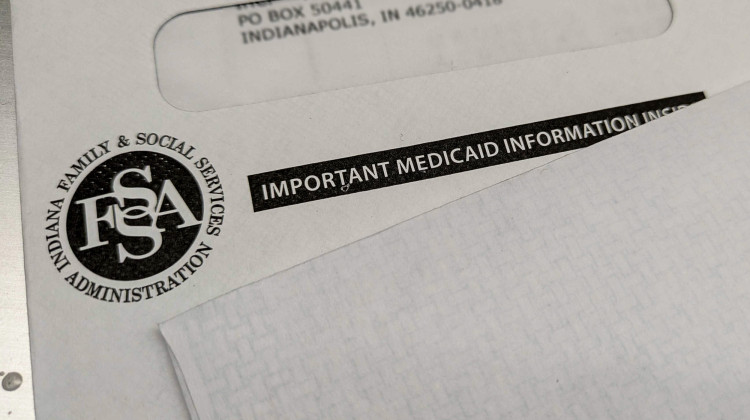
Carol Berman of West Palm Beach, Florida, is one of 30 million Americans now enrolled in Medicare Advantage plans run by private insurance companies.
Josh Ritchie / For TradeoffsWhen Carol Berman first enrolled in a private Medicare plan back in 2000, she was skeptical. She worried the insurance company that ran the plan would exert too much control over when, where and how she got care for her laundry list of conditions — asthma, ulcerative colitis, a bad back.
Twenty-three years later, the West Palm Beach, Florida, resident is thrilled.
“I’ve never regretted it,” 88-year-old Berman said. “It’s a love affair that has grown over the years.”
Millions of American seniors have embraced the idea of an insurance company managing their health care. Just 10 years ago, less than one-third of beneficiaries picked a private plan under what’s known as Medicare Advantage over traditional government-run Medicare coverage. Now two-thirds of enrollees are on track to choose one of these plans – which tend to carry lower out-of-pocket costs and offer a wider array of benefits, like dental care or groceries – by the next decade. Their popularity is growing even faster among Black and Hispanic people.
All of that growth comes at a cost to taxpayers. One federal report estimates that covering people through Medicare Advantage rather than traditional Medicare will cost the government at least $27 billion extra this year alone. Overall Medicare spending is on track to grow almost 8 percent a year over the decade, outpacing both Medicaid and private insurance, according to new data published June 14.
The rapid rise of this private alternative raises questions about what care could — and should — look like for all 80 million people expected to be on Medicare by 2030. As insurers gain more power and traditional Medicare shrinks, this $900 billion-a-year public program is hurtling down a markedly different and more expensive path than the one President Lyndon Johnson charted when it launched in 1965.
The time to decide whether this is the best course for the country is running out, argued Harvard professor Michael McWilliams, who also advises the Centers for Medicare and Medicaid Services.
"The longer we wait," he said, "the fewer options we have."
A fast-shrinking window for policymakers to shape the future of Medicare
Deciding the best course forward requires policymakers to first tackle foundational questions like whether Medicare should cover more than medical care, how much that coverage should cost and what role private companies should play in delivering a public program.
“Our country still does not even agree about whether health care and human services [like food and housing] are a right,” said Allison Rizer, a principal at the consulting firm ATI Advisory and a former executive at UnitedHealthcare.
Historically, policymakers have stuck to more ephemeral debates over how much “choice” seniors should have within the program. McWilliams warned that if our political leaders continue to ignore the harder questions about the program’s shape and cost, the country will end up with “a version of Medicare that we’d never draw up in the first place.”
A sorely needed makeover for the Medicare option created in 1965
Medicare experts have sketched out two alternative, more intentional paths forward. Both are hard.
The first path: Make traditional Medicare more attractive by adding benefits, lowering costs and better coordinating care for beneficiaries.
Today, people on traditional Medicare must pay 20 percent of every doctor’s bill; they also have no limit on yearly out-of-pocket costs for medical care. Many shell out hundreds of dollars every month for supplemental insurance to blunt those costs.
In contrast, all Medicare Advantage plans cap yearly out-of-pocket spending, most include prescription drug coverage, and more than 90 percent cover some dental, vision and hearing care — benefits not available in traditional Medicare. A more affordable plan made the difference for Carol Berman, who said traditional Medicare seemed like a luxury after spending nearly all her savings on nursing home care for her late husband.
Lawmakers did attempt to add dental, vision and hearing benefits to traditional Medicare as part of the Build Back Better Act, but those efforts failed — a stark reminder how difficult it is to give the program a makeover.
“Souping up traditional Medicare is like trying to soup up a 1960s Chevy,” cautioned Matt Eyles, president and CEO of AHIP, the national health insurer trade group.
Strengthening traditional Medicare preserves people's ability to enroll in an insurance program that offers the flexibility to seek care with nearly any doctor or hospital — an attractive option, for example, for individuals with aggressive cancers.
Increasing competition, argues McWilliams, is another benefit.
“A viable traditional Medicare program forces Medicare Advantage to up its game,” he said.
Traditional Medicare can serve as a government-run competitor — often known as a public option — setting a bar for cost, quality and access that private plans have to clear in order to win people’s business.
A ‘Medicare Advantage for all’ future would push U.S. regulators into uncharted territory
The second path: Let traditional Medicare whither away and embrace “Medicare Advantage for all.” This would provide beneficiaries with more financial security and offer extra coverage like dental and vision care to millions more Americans.
“Those benefits can make a big difference, particularly for lower-income Americans,” Rizer said.
To be effective, however, this route would require a level of regulation of private industry unheard of in the U.S., but common in countries like the Netherlands.
Experts are skeptical that could be achieved given how much the government has already struggled to restrain Medicare Advantage companies. David Lipschutz, associate director at the Center for Medicare Advocacy, pointed to data showing that people with greater health needs are more likely to leave Medicare Advantage plans for traditional Medicare, which lets patients get the care they want with fewer hoops to jump through.
“People vote with their feet when they can't get the care that they need,” Lipschutz said.
One federal report found that some Medicare Advantage insurers wrongfully denied people coverage for necessary care 13 percent of the time.
Data also raise questions about the cost effectiveness of Medicare Advantage. Multiple lawsuits, federal audits and investigations have uncovered evidence of private plans gaming Medicare’s payment system in order to boost their profits by billions of dollars. Rick Gilfillan, a former insurance executive who is now an independent consultant, called the Medicare Advantage industry “a corrupt enterprise.”
Policymakers tiptoe toward reforming Medicare, but experts call for bolder moves
While seniors flock to Medicare Advantage, there are signs that policymakers in Washington are troubled by Medicare’s current trajectory. The Biden administration recently finalized significant reforms to how private insurers get paid, and how they manage and market their plans. Congress also made the first major improvement to traditional Medicare in years, capping how much people pay out of pocket for prescription drugs.
Medicare director Meena Seshamani told Tradeoffs in an interview that the agency believes consumers should have meaningful, transparent choices available.
“We need to make sure that whatever option people choose is an option that’s going to address their health holistically and spend the Medicare dollar in the most effective way,” Seshamani said.
Harvard’s Michael McWilliams believes policymakers need to take bolder steps — to either strengthen traditional Medicare or seriously prepare for a future without it. But he questions political leaders’ appetite to move forward.
“I’m basically afraid that we’ll chicken out,” he said.
If Washington continues to inch along and enrollment trends hold, McWilliams fears, “We could wake up in 10 years to a Medicare program dominated by two or three private insurers who are overpaid [and] who face very little competition to cut costs or improve benefits.”
This story comes from the health policy podcast Tradeoffs, a partner of Side Effects Public Media. Dan Gorenstein is Tradeoffs’ executive editor, and Leslie Walker is a senior reporter/producer for the show, which ran a version of this story on June 15. Tradeoffs’ coverage of Medicare sustainability is supported, in part, by Arnold Ventures.
9(MDAyMzk1MzA4MDE2MjY3OTY1MjM5ZDJjYQ000))
 DONATE
DONATE








 Support WFYI. We can't do it without you.
Support WFYI. We can't do it without you.